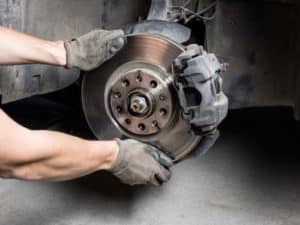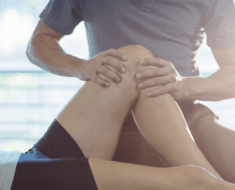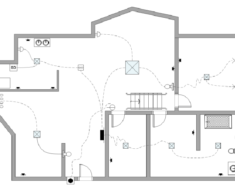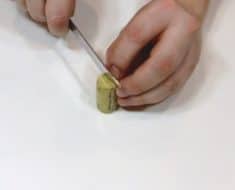
Source: https://www.readersdigest.ca/
Your automobile is the backbone of your life. You rely on your automobile even more than you rely on your own two feet. That being said, driving your auto can be like running off a cliff at full speed if you don’t check your brakes regularly. The brakes on your vehicle play a critical role in city driving and help you maneuver and avoid hazards on the highways. Many accidents are at least partly attributed to bad brakes and failure upkeep the vehicle. Because the consequences are so serious and can easily be prevented, we have detailed the 7 steps to check your front and rear brakes below.
#1: Inspect the Master Cylinder
The master cylinder of your vehicle is a rod and piston mechanism that compresses and forces hydraulic brake fluid through the system when you step on the brake. The master cylinder requires a minimal fluid level to function properly. You can typically look on the outside of the reservoir to determine whether it is filled to the minimum and below the maximum fluid level. Replace it immediately with parts from blacklabelautomotive if you notice visible leaks.
#2: Check for Vacuum Leaks

Source: https://d3vl3jxeh4ou3u.cloudfront.net/
In order to boost pressures, most power brake systems have a vacuum booster that runs off the suction of the engine. You will often find that your brakes are much more responsive when the vehicle is idling because this is when vacuum pressure is the highest. However, if you have even a slight leak in this vacuum system or the cylinder head of your engine, the brake power will be noticeably diminished. In addition, the engine will also shake and run rough, maybe even stall out, at idle.
#3: Visually Inspect the Front Brake Systems
If your brakes don’t feel quite right, you may want to take off the front tires to check the brakes and rotors. This requires nothing more than an automotive floor jack, some jack stands for safety, and a tire iron or breaker bar and socket to remove the lug nuts. You should avoid using the emergency tire jack in your trunk because they should only be used to change a tire.
If you notice any hydraulic fluid leaks that look like oily residue on the brake hoses, unions, or caliper, this will usually be accompanied with a loss of brake pressure that is most noticeable when trying to bring the vehicle to a complete stop at even low speeds. If the pads are worn or the rotors have a large ridge on the outer edge, this will also indicate the need for replacement and service.
#4: Visually Inspect the Rear Brake System
Most modern rear brake systems will have the same type of caliper and rotor designs as the front. However, some may have both drums and calipers or just drum brakes. The drum brakes can be harder to check because the pads will sit snugly against the drum cover and make it difficult to do a visual inspection. You can manipulate a worm gear by accessing a slot in the lower rear of the backing plate to loosen the pads and permit removal.
#5: Bleed the Brakes

Source: https://usercontent1.hubstatic.com/
If the pedal feels spongy when you try to brake, the problem is usually the brake fluid itself. The brake fluid is hygroscopic and will absorb moisture from the atmosphere through micropores in the brake system. In order to replace the fluid, you need someone to pump the brakes while you open each valve on the calipers individually. You must also add fresh fluid and quickly replace the master cylinder cap.
#6: Check for Codes
Newer vehicles may alert drivers to brake problems by illuminating the Check Engine light or storing an alphanumeric code. These codes can help you detect problems with the ABS (Anti-lock Brake System) unit or other electromechanical malfunctions.
#7: Try the Emergency Brake
One of the easiest ways to check the rear brakes for brake pad wear without a visual inspection is to simply pull the emergency brake. If you park your vehicle in neutral and the emergency brake does not prevent it from rolling forward, the cable mechanism or eccentric of the rear drums may need adjustment if the pads themselves pass the visual inspection.









































